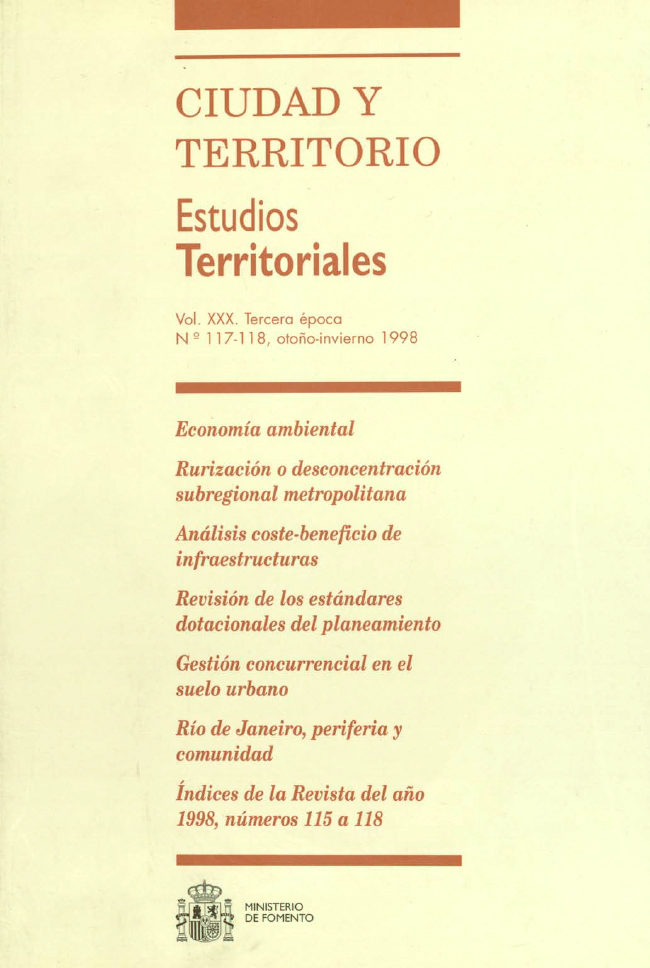The 1931 Opening of The Casa de Campo to the Madrid General Public. Background, Significance of and the Problems this Gave Rise to
Keywords:
Casa de Campo, Madrid, Parques públicosAbstract
The paper explains that the Madrid? Casa de Campo? was set up in the 16C. as a royal hunting park and lodge in the times of Phillip ll. As such it grew and developed as a royal place of residence on the outskirts of Madrid. This very private estate, so close to yet having so little to do with the city, was coveted as a public place of recreation by the citizens from 1868 onwards. On 15 April 1931, the day after the proclamation of the Second Spanish Republic, the estate, now public domain, was thrown open to the public. The paper sees this event as a signal example of private ground being made over to public use on a massive scale. And thus closely analyses the whole process and the problems that it gave rise to.
Downloads
Downloads
Published
How to Cite
Issue
Section
License
Copyright (c) 1998 Ignacio Pérez-Soba Diez del Corral

This work is licensed under a Creative Commons Attribution-NonCommercial-NoDerivatives 4.0 International License.
Considering the provisions of the current legislation on Intellectual Property, and in accordance with them, all authors publishing in CyTET give -in a non-exclusive way and without time limit- to the Ministry of Transport, Mobility and Urban Agenda the rights to disseminate, reproduce, communicate and distribute in any current or future format, on paper or electronic, the original or derived version of their work under a Creative Commons Attribution-NonCommercial-NoDerivative 4.0 license International (CC BY-NC-ND 4.0), as well as to include or assign to third parties the inclusion of its content in national and international indexes, repositories and databases, with reference and recognition in any case of its authorship.
In addition, when sending the work, the author(s) declares that it is an original work in which the sources that have been used are recognized, committing to respect the scientific evidence, to no longer modify the original data and to verify or refute its hypothesis. Author(s) also declare that the essential content of the work has not been previously published nor will it be published in any other publication while it is under evaluation by CyTET; and that it has not been simultaneously sent to another journal.
Authors must sign a Transfer of Rights Form, which will be sent to them from the CyTET Secretariat once the article is accepted for publication.
With the aim of promoting the dissemination of knowledge, CyTET joins the Open Journal Access (OA) movement and delivers all of its content to various national and international indexes, repositories and databases under this protocol; therefore, the submission of a work to be published in the journal presupposes the explicit acceptance by the author of this distribution method.
Authors are encouraged to reproduce and host their work published in CyTET in institutional repositories, web pages, etc. with the intention of contributing to the improvement of the transfer of knowledge and the citation of said works.







